Communities have always understood that parks and recreation are important, but the pandemic and the recent focus on social equity have highlighted this importance, especially in terms of impacts on health.
Many communities are using this renewed spotlight on parks to re-think how and where they provide park space and how to be more inclusive. Developing parks is becoming increasingly challenging, as available land is becoming more scarce and budgets are shrinking. But, within the challenge, there is also an opportunity to learn and get creative, and by doing so, increase the well-being of our communities and those who reside within them.
The challenge
The reality is that in many places, space is downright limited. This leaves communities challenged with finding suitable locations for parks. In high-density urban areas where infill development is occurring, it can be difficult to find any open space at all. In rural areas, though open space is plentiful, farmland preservation codes might prevent the conversion of agricultural land to parkland. There may also be natural limitations, including ravines, wetlands, lakes, or streams which make it challenging to utilize any open space that is present.
Creative solutions
Communities are becoming increasingly creative at finding space for parks when space is the limiting factor. The examples below are just a few of these creative solutions.
Pocket parks
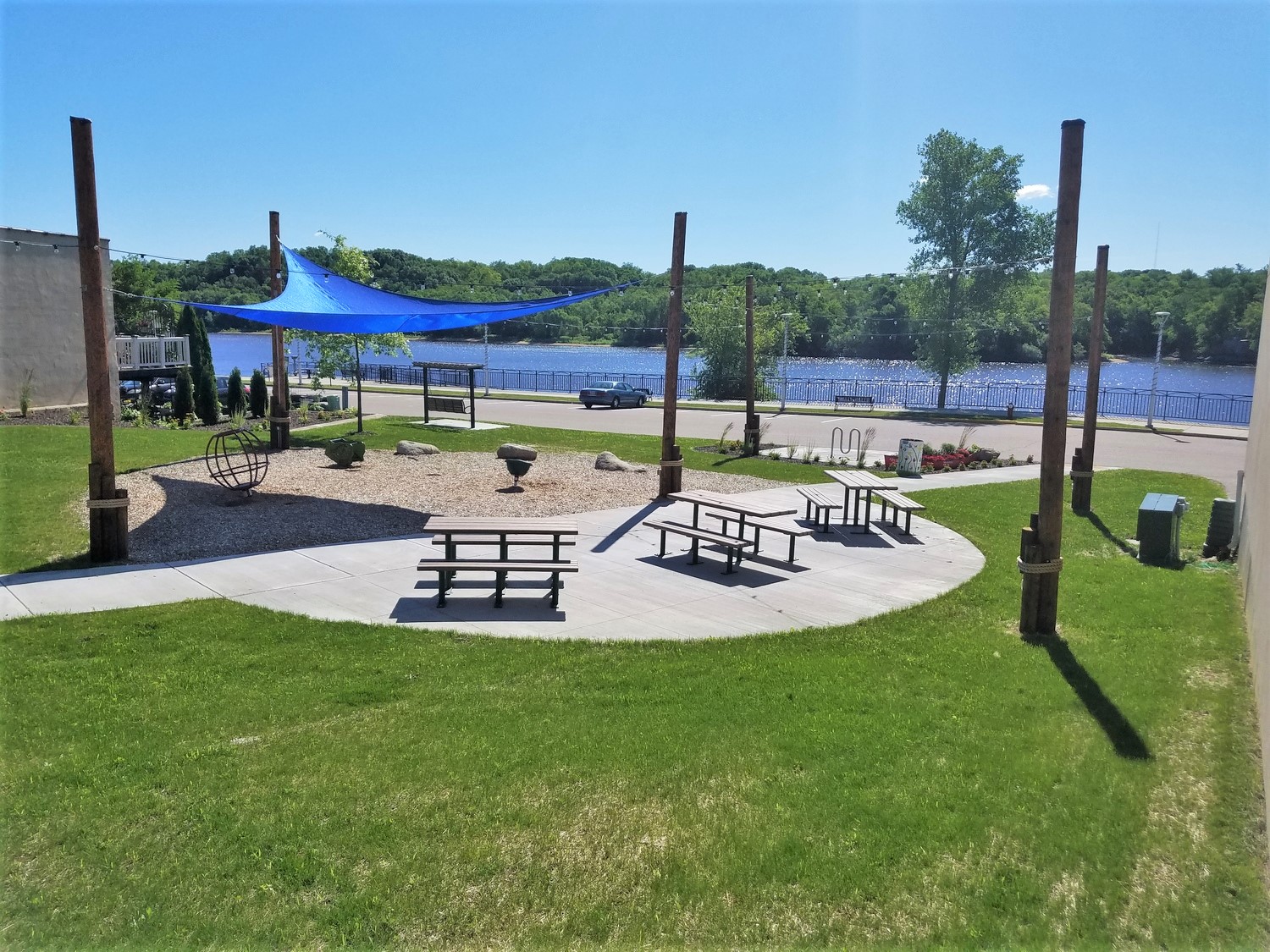
Sauk City Pocket Park
Pocket parks work well in higher-density urban areas because they are small (typically no more than ¼ acre), created on underutilized land or vacant lots. Amenities can vary, but typically include open space, play equipment and places for socializing. According to the NRPA, pocket parks should be accessible, comfortable spaces, have a good image and be social places where people can meet.
Example: Sauk City Riverfront Pocket Park (Sauk City, Wisconsin): This park was originally a small, vacant parcel between two buildings on the Wisconsin River. The park includes an ADA-accessible path, places for playing, socializing and taking in views of Sauk City’s downtown and the Wisconsin River.
Pop-up parks
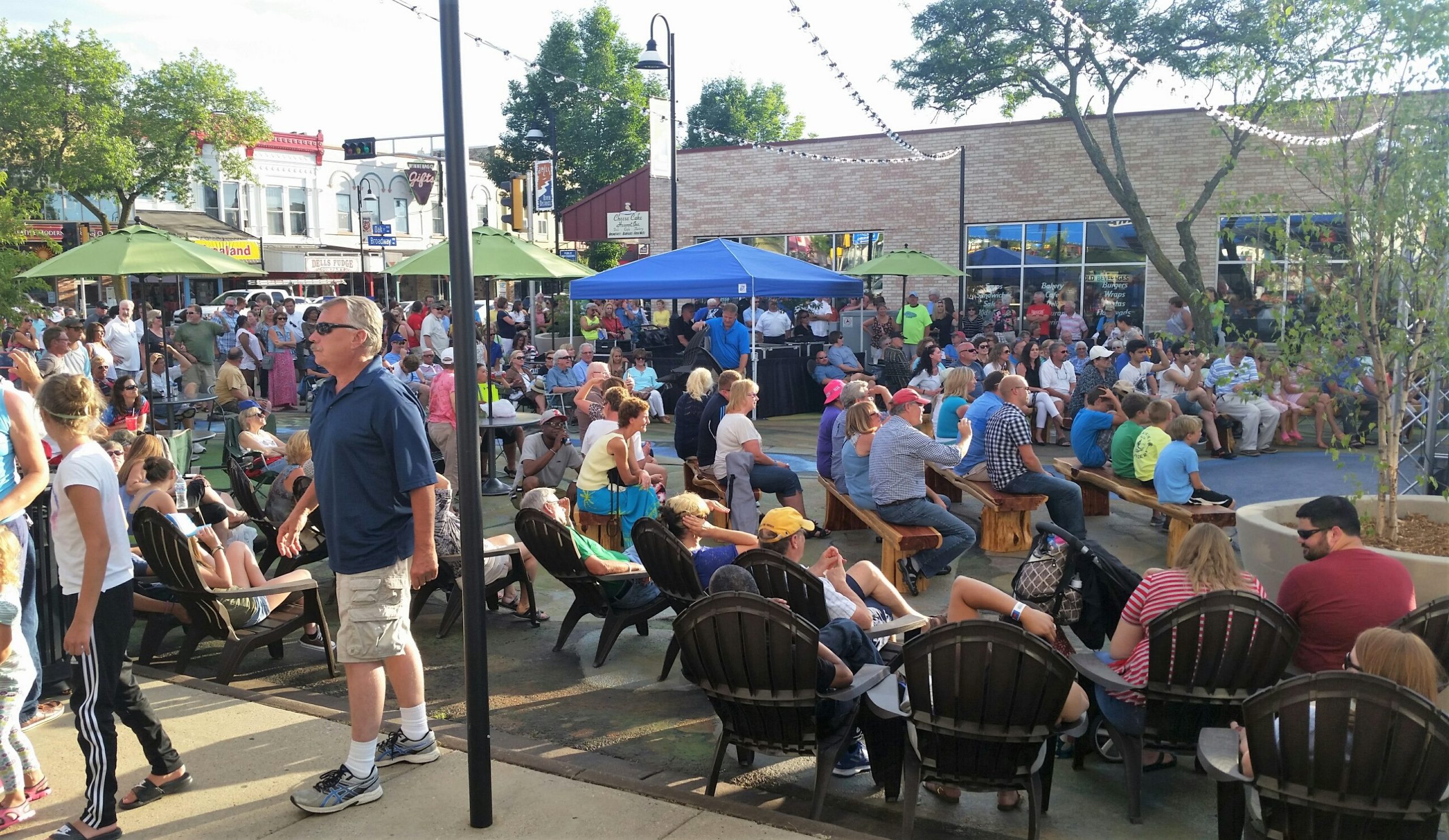
Duchess Plaza
Pop-up parks are temporary park spaces, often located in parallel parking stalls, parking lots or in streets as extensions of sidewalks. The definition of temporary could be a one-time event or an installation evolving over several years. The benefits of pop-up parks are that they can be used to pilot new ideas and challenge the way we think about using public space. These types of parks can also be relatively low in cost.
Example: Wisconsin Dells Plaza (Wisconsin Dells, Wisconsin): “Duchess Plaza” is a pop-up park in downtown Wisconsin Dells that officially opened in 2016. The park is located on a portion of a closed road and is intended to be a “free entertainment plaza.” The park features a stage for concerts, cafe chairs and tables, lighting, planters and a large three-dimensional mural on the road designed to look like the river flowing through sandstone dells.
Stormwater management areas
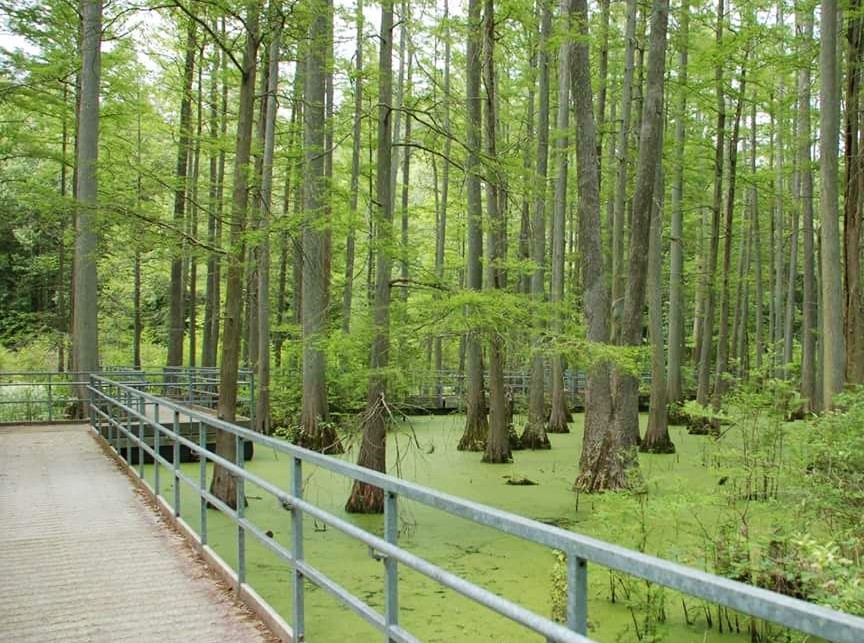
Heron Pond – photo courtesy of AllTrails member Jason Reed
Stormwater management areas offer an opportunity to create a multi-purpose space for stormwater management and for public greenspace. Small parks and trails or boardwalks are typically compatible with retention ponds, drainage areas and wetlands. Due to the prevalence of flooding in these areas, passive recreation opportunities, like walking trails and nature observation, are generally preferred.
Example: Heron Pond (Belknap, Illinois): Heron pond is a pond and wetland property that is home to over 100 endangered and threatened plant and animal species in the Ohio River floodplain. This area is a part of the larger Little Black Slough Nature Preserve. The wetland property features trails, restrooms, parking and boardwalk trails through the wetlands and drainageways. Other recreational activities available include hunting, fishing and canoeing.
Highly inclusive parks
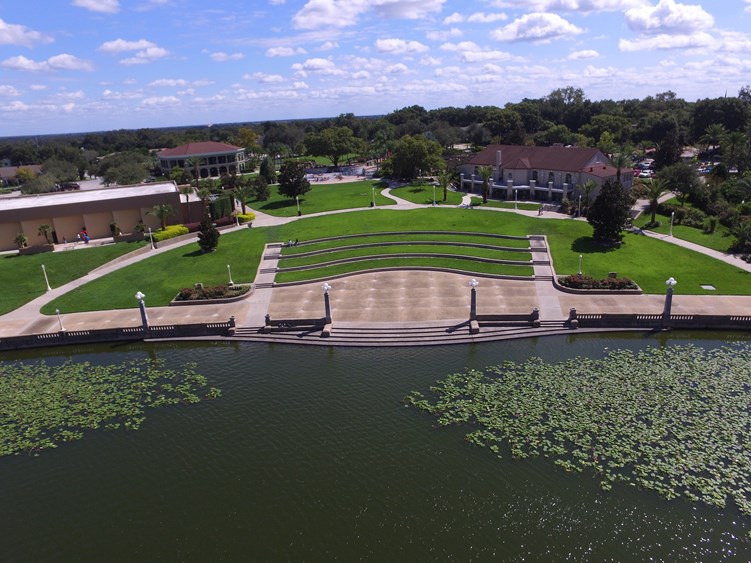
Lake Mirror Park – Image credit, City of Lakeland
Often redevelopment areas have little land available to dedicate to new parks. To accommodate additional residents brought in by redevelopment, communities can focus on expanding experiences for users at existing parks. Adding places to play, relax, eat, socialize and exercise increases the potential for a variety of users at these parks. The goal of focusing on existing parks is to expand the number of options for active and passive recreation. Through these expanded options, the pool of potential users in terms of age, ability, race, socioeconomic status, etc. will also be expanded.
Example: Lake Mirror Park (Lakeland, FL): Lake Mirror Park includes seven acres of open space surrounding the lake and seven acres of recreation and leisure facilities. The City implemented a master plan for the park in 2010 to transform it into the center of activity for the community. It is the only location in the City that can accommodate large events. The restoration of the park led to additional improvements to the area – both public and private investment. The park features a stormwater pond, a play area, splash pad, picnic areas, a botanical garden, promenade and public art. Recycled materials are used throughout the park (e.g. recycled glass in concrete benches, recycled rubber as surfacing in play areas). The park hosts over 18 major community events each year.
Public-private partnerships
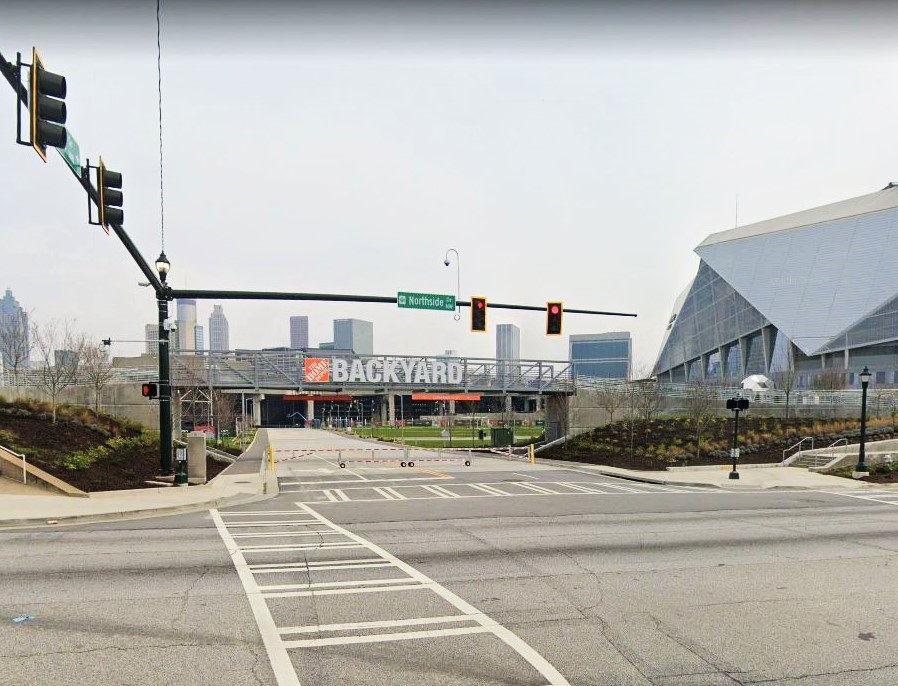
Home Depot Backyard
Existing businesses sometimes have unused or underutilized open space on their properties. This presents an opportunity for a partnership with the community. Use of these spaces can be granted via agreements in which some communities offer businesses local tax breaks in exchange for sharing greenspace.
Example: Home Depot Backyard (Atlanta, GA): The Home Depot Backyard is an 11-acre green space on the former Georgia Dome space and is used as parking for Falcons and Atlanta United FC home games on game days and as public greenspace on other days. The site is a partnership between the Atlanta Falcons, Atlanta United, Blank Family of Businesses, Mercedes-Benz Stadium, and the City of Atlanta. The site has very little infrastructure so it can be used for multiple uses. There are a variety of programs and activities from arts and culture, to health and wellness, to community education.
Small spaces, huge benefits
The benefits of parks go far beyond simply being spaces where people can recreate. Parks contribute to the physical and mental health of individuals and provide public safety, environmental, economic and social equity benefits to our communities. Recently, parks have come to the forefront of public health discussions due to COVID-19. The pandemic has put parks in the spotlight as more people seek them out as natural refuges from the virus.
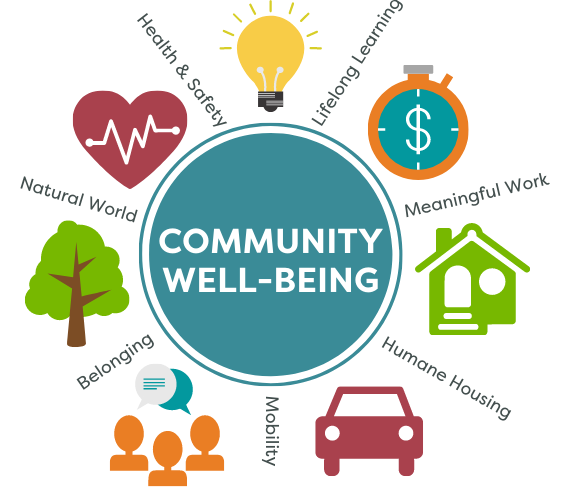
Seven facets of well-being according to Community Commons.
According to Community Commons, a resource website run by the Institute for People, Place and Possibility (IP3), there are seven vital conditions for community well-being:
-
- Basic need for health and safety
- Lifelong learning
- Meaningful work and wealth
- Humane housing
- Reliable transportation
- Thriving natural world
- Belonging and civic muscle
Parks touch every one of these conditions and are an important part of what brings people and businesses into our communities and keeps them there.
Health and safety
According to the National Recreation and Parks Association (NRPA), when individuals use green spaces, they have fewer health issues, improved blood pressure and cholesterol levels, and reduced stress—which leads to a lower incidence of depression and a greater ability to face problems. According to a report by the NRPA titled “The Economic Impact of Parks,” “Diabetic individuals taking 30-minute walks in a green space experienced lower blood glucose levels than spending the same amount of time doing physical activity in other settings. Thirty minutes of walking in nature resulted in larger drops in blood glucose than three hours of cycling indoors.”
Lifelong learning
Recreation programming in parks, in addition to providing physical and mental health benefits, also provides lifelong opportunities for learning. Park and recreation departments across the country have outdoor programming for young and old alike. From art and nature photography classes to organized sports leagues, recreation programming is accessible, affordable and is a great way to get outside and stimulate your mind.
Meaningful work, wealth and humane housing
According to the NRPA, economic research has shown that properties located near parks and greenspaces have consistently higher values than those located farther away and that 85% of people who responded to a 2019 “engagement with parks” survey stated that they look for high-quality parks when choosing a place to live. “The Economic Impact of Parks” report states that “local park and recreation agencies generated $166 billion in economic activity and supported more than 1.1 million jobs in 2017” in the United States.
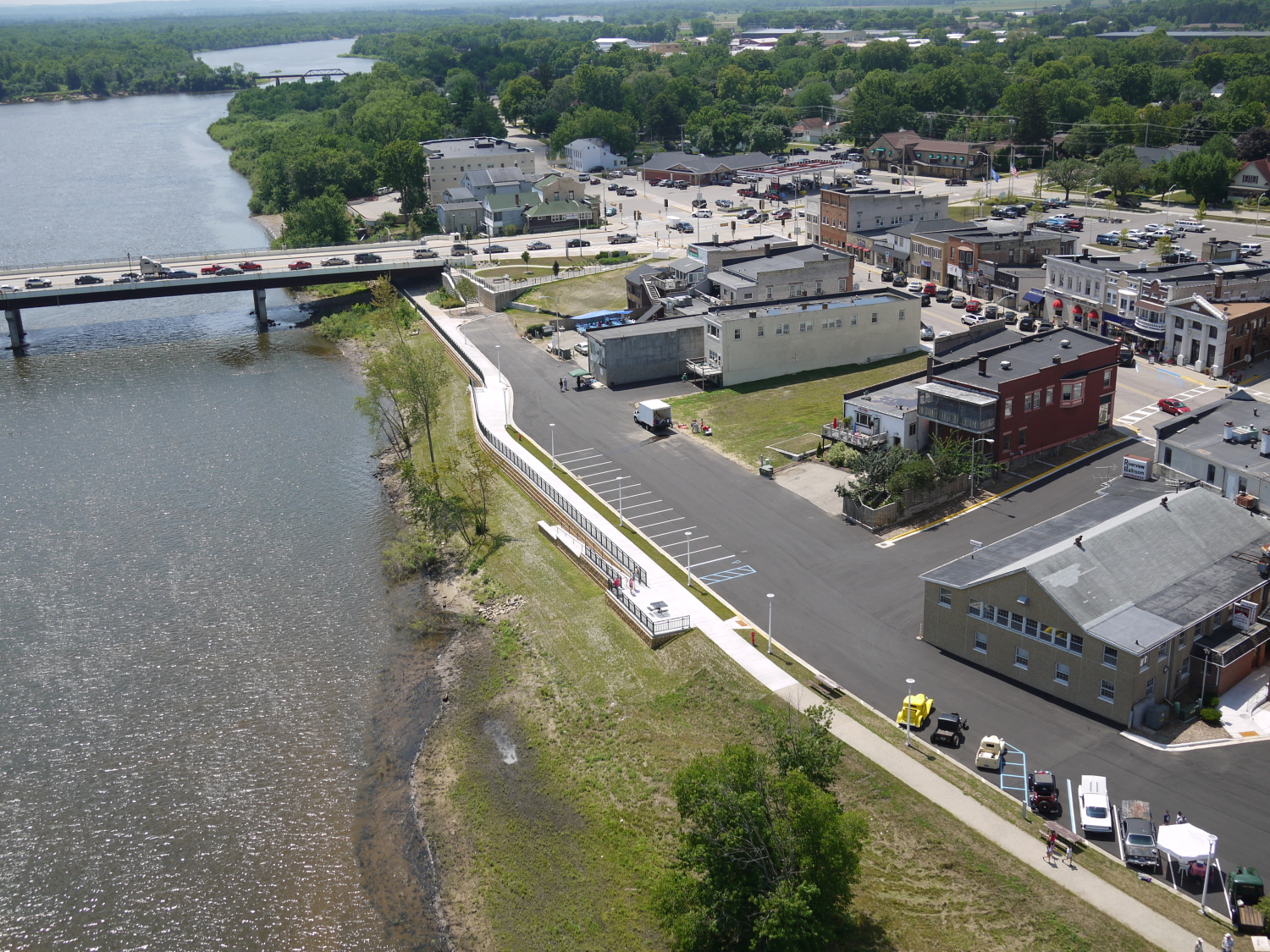
Reliable transportation
Parks and park corridors often provide shared-use paths for transportation and recreation. These paths can provide an important alternate means of traveling for those who prefer to bike for health or environmental reasons and for those who lack other means of transportation due to age, income or disability. Shared-use paths also provide important connections to public transit. According to the National Household Travel Survey conducted by the Federal Highway Administration, 85% of transit trips begin and end with walking and nearly one in six walking trips is made for the purpose of accessing public transit.
Thriving natural world
Parks and green spaces also play an important role in protecting the environment and preserving wildlife habitats. They create green infrastructure, which provides stormwater management and helps control flooding. They provide environmental corridors and safe havens for species like migratory birds and butterflies to use as stop-overs on their migration routes. Green spaces, trees in particular, also help reduce heat island effects within urban areas and help sequester carbon from the atmosphere to combat climate change. Local parks also help connect people to nature, which according to NRPA helps individuals and communities become “environmental stewards that advocate for and protect our most precious public resources — our land, water, trees, open spaces and wildlife.”
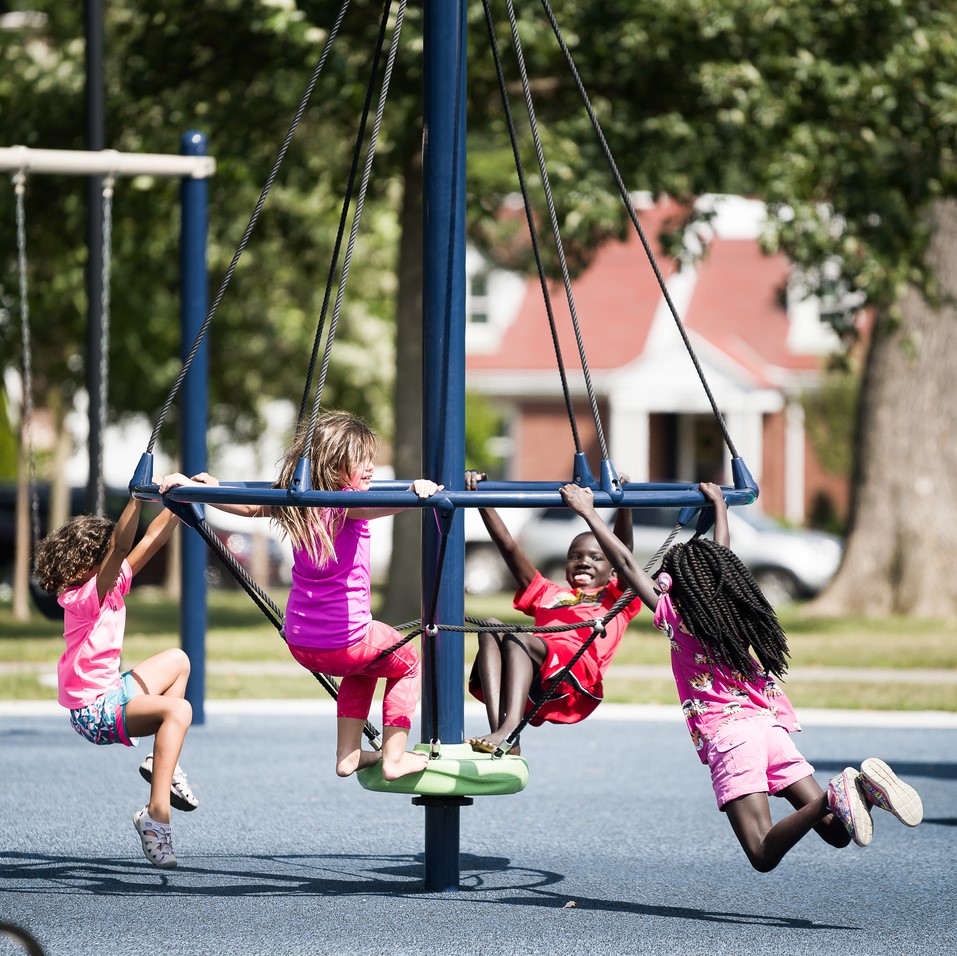
Belonging and civic muscle
Public parks are a unique amenity because they have the potential to be accessible to anyone in a community, regardless of age, gender, ability, socioeconomic status, race or ethnicity. Though we often find that disparities exist in the distribution and quality of parks and recreation amenities, many parks and recreation departments across the U.S. are now rethinking how to engage and provide benefits to residents who do not currently have access to parks. If parks can be more inclusive, they have the potential to function as a nucleus of neighborhood activity, where residents can gather for social events, recreational activities, and meetings about local issues, increasing social interaction and creating an overall sense of community.
Rethinking the future of our parks
Indeed, the benefits of community parks and recreational spaces far outweigh the constraints placed on them by urban grids and geography. As our world population continues to grow and as suburban sprawl and rural development continue at a rapid pace, there is no better time than now to stake a claim on property for the development of these essential public spaces. Your community’s health, diversity, social equity and economic stability depend on it.
